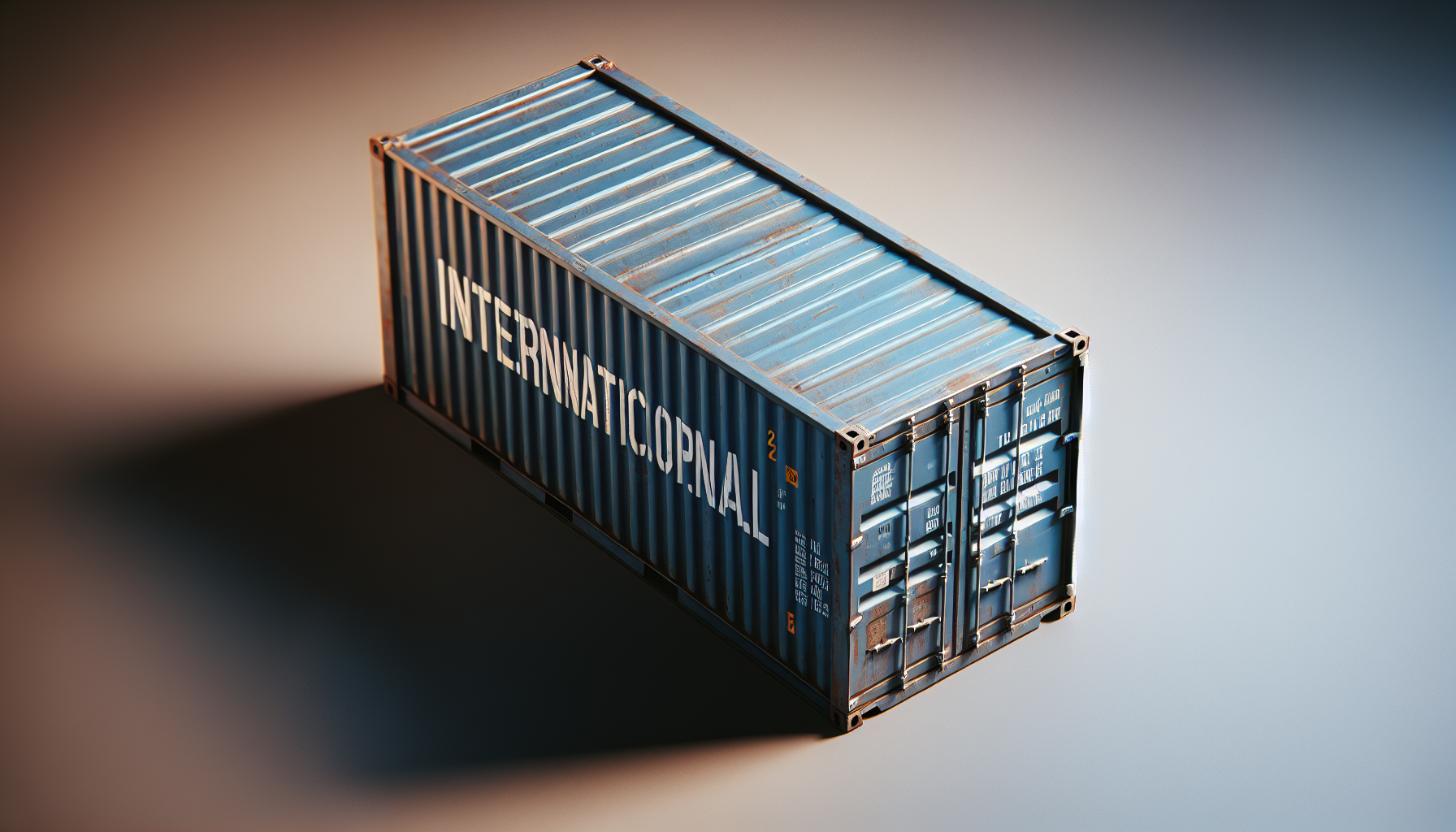ISF Filing For Amazon Sellers: Visual Guide For Brokers (Deadline Compliance Edition)
?Are you confident your ISF submission process protects you from penalties and keeps Amazon cargo moving smoothly through U.S. ports?
ISF Filing For Amazon Sellers: Visual Guide For Brokers (Deadline Compliance Edition)
This guide gives you a clear, step-by-step view of what you must do as a broker handling ISF (Importer Security Filing) for Amazon sellers. You’ll get practical checkpoints, compliance tips, and start-to-finish coverage that helps you manage deadlines, corrections, and edge cases with confidence.

What ISF is and why it matters to you
You need to know that ISF, commonly called the 10+2, is a U.S. Customs and Border Protection (CBP) requirement for ocean shipments arriving in the United States. It’s designed to provide advance cargo information so CBP can assess security risk before containers arrive. If you miss ISF deadlines or submit incorrect data, penalties, delays, and detention could follow — and that can disrupt the seller’s Amazon inbound schedule.
Who does what: roles in ISF handling
You’re typically acting as the broker or customs house broker, responsible for filing ISF on behalf of the importer of record (the Amazon seller or their designated importer). The importer must authorize you, provide accurate data, and maintain records. CBP enforces the rules; carriers file vessel stow plans and crew manifests. Understanding each party’s role prevents finger-pointing when issues arise.
ISF timeline and critical deadlines
You must file ISF at least 24 hours before the cargo is loaded on the vessel at the foreign port. If you miss that window, you might be allowed to file late but penalties can apply. You should also file accurate manifest and customs entries as required by entry type and port. For Amazon sellers using expedited inbound processes, timely ISF is often the difference between on-time delivery and Amazon receiving hold actions.
The 10 data elements you must file
You’ll need to collect and submit these 10 core data elements for ISF:
- Seller/importer name and address (Importer’s precise legal name and U.S. address).
- Seller/importer’s Internal Transaction Number (if applicable).
- Consignee number(s) or EIN/IRS number of the importer.
- Manufacturer (or supplier) name and address.
- Seller’s or supplier’s country of origin information for goods.
- Buyer (if different than importer) name and address.
- Seller’s Harmonized System (HTS) or tariff classification when available.
- Container stuffing location (where goods were loaded into the container).
- Consolidator name and address (if goods were consolidated).
- Booking or bill of lading number and shipper’s reference numbers.
You must capture each element accurately and transmit it in the CBP-approved ISF format.
Gathering data from Amazon sellers: practical tips
You should require a standardized data submission package from the seller that includes manufacturer details, supplier addresses, and commercial invoices early in the procurement process. Use a checklist or online intake form that forces required fields to be complete before scheduling an ISF. If you rely on the seller for data, set service-level agreements with penalties or hold policies for incomplete information.
Visual checklist for your ISF workflow
You can visualize the process as a linear checklist to reduce errors:
- Receive booking and seller documents.
- Verify seller authorization to file ISF on their behalf.
- Validate manufacturer/supplier addresses and HTS codes.
- Confirm container number and stuffing location.
- File ISF 24+ hours before loading.
- Track carrier’s stow plan and match to ISF.
- Update or correct ISF if new data arrives pre-arrival.
- Submit customs entry and release documents when eta/arrival is imminent.
- Retain records for five years as required.
This checklist helps you step through each action with accountability.
Common ISF mistakes and how to avoid them
You’ll see repeated errors that can cause delays or fines. Here are the top ones and prevention strategies:
- Missing or incomplete manufacturer address — require full physical address and validate against supplier invoices.
- Wrong consignee or EIN — cross-check with the importer’s IRS documents.
- Late filing — set automated alerts that flag bookings needing ISF three days before loading.
- Incorrect container stuffing location — require photos or packing lists confirming stuffing site.
- Failure to update ISF after consolidation changes — implement policies that require immediate reporting of consolidations or transshipments.
If you standardize intake, validation, and confirmation, your error rate will drop significantly.
Correcting ISF: what you can and cannot change
You can amend certain fields before the vessel departs foreign port and sometimes up until arrival depending on your port’s practice. Amendments are restricted for other fields once filed. If you need to correct critical data, file an ISF amendment through your CBP-approved portal immediately and keep written evidence of the reason. If you miss the chance to amend before arrival, be prepared to provide explanatory documentation and work with CBP on penalties.

Handling edge cases and special scenarios
You’ll encounter complex cases such as:
- Split shipments and partial container loads — you must ensure each importer’s data is filed correctly and container numbers are consistent.
- Transshipments and through bills of lading — determine which carrier and port of loading triggers the ISF requirement; transshipments can complicate the filing window.
- Drop-shipped goods for Amazon FBA from multiple suppliers — reconcile each supplier and ensure manifold documentation to attribute goods to the correct importer.
- Multiple manufacturer locations — file the manufacturer location that matches the vendor that actually produced the articles.
Plan for these scenarios by having escalation protocols, additional data checks, and clear communication with sellers.
Penalties and audit risk: what you should expect
You’re subject to monetary penalties for late or inaccurate ISF filings; CBP can issue fines of up to several thousand dollars per violation, depending on circumstances. In addition, penalties and holds on containers can delay Amazon inbound windows and result in chargebacks or refusal of delivery by Amazon. Keep audit trails — timestamps of submission, seller confirmations, and amendment logs — to defend filings in case CBP questions them.
Recordkeeping and documentation requirements
You must retain ISF data and supporting documents for five years. Keep original copies of authorizations from importers, invoices, packing lists, bills of lading, and amendment logs. Maintain digital backups in secure, timestamped systems so you can produce records during CBP reviews or import audits.
Using software and automation to scale compliance
You can reduce risk by integrating your systems with booking portals and freight forwarders. Automation helps enforce mandatory fields, runs validation checks on addresses and EINs, and triggers alerts when the ISF window approaches. If you manage many Amazon sellers, configure templates for frequent shippers and rule-based checks for HTS codes and country-of-origin logic.
Coordination with carriers and Amazon timelines
You must synchronize ISF filing with vessel sailing schedules and carrier notification windows. Carriers and NVOCCs have their own deadlines; your ISF must be filed 24 hours prior to loading, not arrival. Communicate with sellers about Amazon FBA windows — missing Amazon cutoff dates can cause rejections, so build buffer times into your SLA.
Practical examples: filing scenarios
Here are a couple of real-world scenarios to guide you:
- Scenario A: Single manufacturer, single container — You obtain manufacturer address and invoice, file ISF 48 hours before loading, confirm container number, and monitor stow plan. No amendments needed.
- Scenario B: Consolidation with multiple suppliers — You collect supplier lists, allocate HTS codes per SKU, file ISF for each importer under one container link, and amend when the consolidator reports a last-minute supplier change.
These examples show how a disciplined intake process helps you manage complexity.
Communicating with Amazon sellers and managing expectations
You should set clear contract terms and communication standards with sellers: required lead times, documentation templates, and deadlines for data submission. Give sellers a clear breakdown of who’s responsible for what and the consequences of late or incomplete information. Provide status dashboards or weekly reports so sellers know where their shipments stand relative to Amazon deadlines.
Compliance checklist for brokers (quick reference)
This compact checklist helps you avoid last-minute surprises:
- Obtain written authorization to file ISF on importer’s behalf.
- Collect full manufacturer, seller, and consignee details.
- Validate EIN/IRS numbers and addresses.
- Confirm container numbers and stuffing location.
- File ISF at least 24 hours before loading.
- Keep amendment logs and timestamps.
- Retain records for five years and back them up.
- Monitor carrier stow plans and arrival updates.
- Educate sellers on consequences of missing Amazon inbound windows.
Use this to standardize your daily operations.
Frequently asked questions you’ll answer for sellers
You’ll often be asked: Can ISF be filed after loading? Can changes be made after the vessel sails? What documentation do you need from foreign suppliers? Be ready with concise answers and required document lists so sellers understand the timeline and their responsibilities.
Adding value to your service offering
You can increase your service value by offering bundled customs options that include ISF filing, customs entry preparation, and carrier coordination. If you provide US Customs Clearing Services separately, mention it as an integrated part of your solution when selling to new Amazon clients. This positions you as a one-stop compliance partner for marketplace sellers.
Final compliance tips and best practices
Always build buffer time into the ISF process, standardize documentation intake, and maintain an audit-ready system. Regularly train staff on current CBP guidance, and update templates when CBP changes data element definitions. Actively monitor CBP notices and industry alerts so you’re never caught off guard.
Closing guidance: your action plan for next shipments
Start by auditing your current ISF error rate, then implement a mandatory data intake form and automated deadline alerts. Create a master checklist for every booking and require signoff before filing. With those processes in place, you’ll reduce penalties and keep Amazon inventories moving reliably.
If you want, I can help you draft a standardized ISF intake form or an authorizations template that you can share with your Amazon seller clients.
